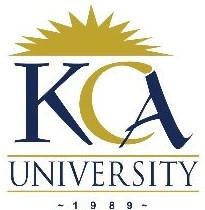 UNIVERSITY EXAMINATIONS: 2010/2011
UNIVERSITY EXAMINATIONS: 2010/2011
FIRST YEAR EXAMINATION FOR THE DEGREE OF BACHELOR OF
SCIENCE IN INFORMATION TECHNOLOGY
BIT 1305: COMPUTER NETWORKS
DATE: AUGUST 2011 TIME: 2 HOURS
INSTRUCTIONS: Answer question ONE and any other TWO questions
Question One
a) TCP/IP protocols had several important features that allowed them to meet the need for worldwide
data communication. Explain briefly any three of these features. (3 Marks)
b) Describe briefly five main functions of most Network Operating Systems. (5 Marks)
c) You are experiencing intermittent issues relating to congestion with your network. What are the
possible causes of congestion on a LAN? (4 Marks)
d) Outline six metrics used by routing protocols to determine the best path (6 Marks)
e) Describe four guidelines for creating effective network documentation (4 Marks)
f) Communication between individuals is determined to be successful when the meaning of the
message understood by the recipient matches the meaning intended by the sender. State five
external factors that affect the success of communication. (5 Marks)
g) State any three reasons why TCP/IP is suited for implementations of intranets and extranets.
(3 Marks)
Question Two
a) Conduct a detailed cost-benefits analysis of network use. (6 Marks)
b) Data networks continue to evolve in complexity, use, and design. To communicate about networks,
different types of networks are given different descriptive names. State five specific characteristics
that are used to identify a computer network. (5 Marks)
c) State the three major characteristics of WANs. (3 Marks)
d) Discuss the three layers of the hierarchical network model. (6 Marks)
Question Three
a) State two advantages and two disadvantages of using:
(i) 10BASE-T (4 Marks)
(ii) 100BASE-TX (4 Marks)
b) Discuss the following transport layer functions:
i) Establishing a Session. (2 Marks)
ii) Reliable Delivery (2 Marks)
iii)Same Order Delivery (2 Marks)
iv)Flow Control (2 Marks)
c) Describe the concepts of:
i) Asymmetric switching (2 Marks)
ii) Symmetric switching (2 Marks)
Question Four
a) Discuss the following concepts as used in computer networks:
i) Fault Tolerance (4 Marks)
ii) Scalability (4 Marks)
b) To accomplish their purpose, Ethernet LAN switches use five basic operations. Explain the
following ethernet switch operations:
i) Learning (2 Marks)
ii) Aging (2 Marks)
iii)Filtering (2 Marks)
c) State any four functions of a Web browser (4 Marks)
d) Explain briefly the concept of Storage Area Networks (SANs). (2 Marks)
Question Five
a) IEEE 802.11 is the standard that specifies connectivity for wireless networks. IEEE 802.11, or WiFi, refers to a collective group of standards. These protocols specify the frequencies, speeds, and
other capabilities of the different Wi-Fi standards. In this regard, describe the following standards:
(i) IEEE 802.11a (2 Marks)
(ii) IEEE 802.11b (2 Marks)
(iii) IEEE 802.11g (2 Marks)
b) Each media type has its advantages and disadvantages. Outline five important factors to consider
when selecting media for computer networks. (5 Marks)
c) List any five factors that can determine throughput (5 Marks)
d) Describe four benefits to using a layered model to describe network protocols and operations.
(4 Marks)